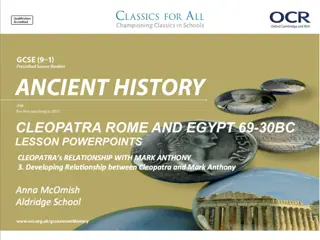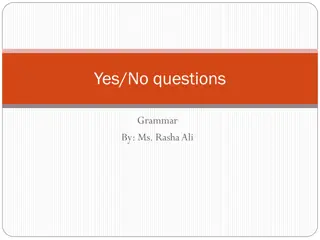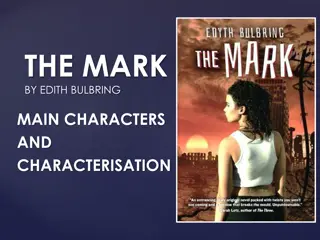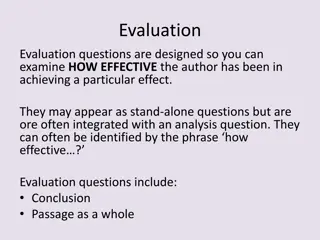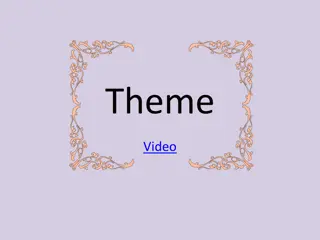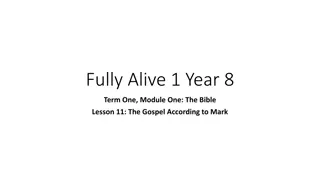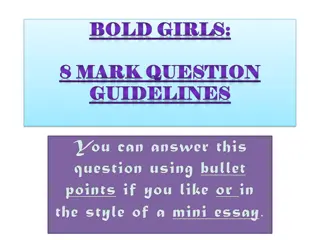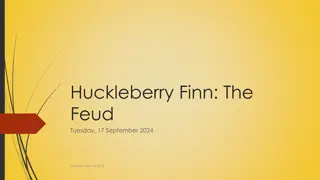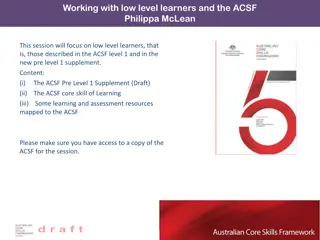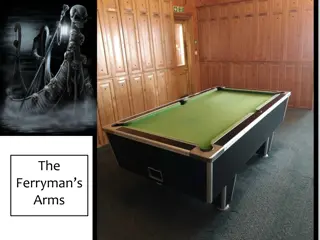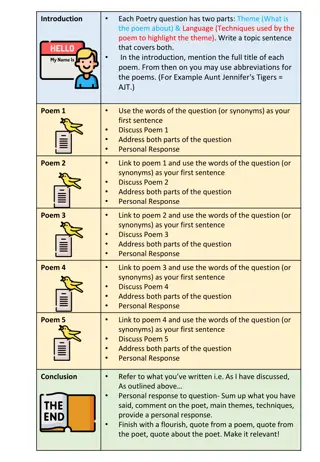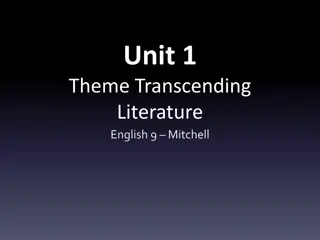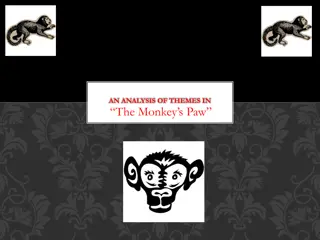Developing 6-Mark QER Questions in A-Level Themes
This material explores the process of crafting 6-mark Quality of Extended Response (QER) questions in A-level themes. Learn how to structure questions, incorporate diagrams, and assess responses effectively. With practical examples and guidelines, you can enhance your question-writing skills for educational purposes.
Download Presentation

Please find below an Image/Link to download the presentation.
The content on the website is provided AS IS for your information and personal use only. It may not be sold, licensed, or shared on other websites without obtaining consent from the author.If you encounter any issues during the download, it is possible that the publisher has removed the file from their server.
You are allowed to download the files provided on this website for personal or commercial use, subject to the condition that they are used lawfully. All files are the property of their respective owners.
The content on the website is provided AS IS for your information and personal use only. It may not be sold, licensed, or shared on other websites without obtaining consent from the author.
E N D
Presentation Transcript
2018-19 Creating your own 6 mark QER questions Dave Turner Presenter
6 mark QER questions QER = Quality of Extended Response There are 6 mark QER questions throughout the AS and A level components Candidates have approximately 20 lines and if appropriate may have half a page or more for diagram(s)
6 mark QER questions in A level themes The options in AL Component 3 each have 2 data response questions and a stand-alone 6 mark question with a QER banded mark approach With only 20 lines and 6 marks, the QER questions in the themes are not the same as old GL5 parts of essays worth 15-25 marks
6 mark QER questions in A level themes Since these are Quality of Extended Response (QER) questions candidates will not simply be able to gain full marks using labelled diagrams alone. Candidates will need to produce extended writing in the form of text and/or where appropriate, extensive annotations on diagrams. Diagrams should only be used where they add to the text. Credit will not be given to concepts in diagrams which have already been credited in the text
Writing your own questions QER questions could be close to the wording of the specification. Explain how Milankovitch Cycles are believed to cause climatic fluctuations in the Quaternary. You may wish to use an annotated diagram(s) in your answer. [6 QER]
Writing your own questions Or they could develop a concept from one part of the specification without using exact wording. Explain the range of igneous bodies and their associated rock types found in the Paleogene Igneous Province of north-west Britain. [6 QER]
Writing your own questions Or they may draw together ideas from more than one part of the specification. Explain why oceanic lithosphere varies in thickness across oceanic regions [6 QER]
Writing your own questions You may find parts of old GL5 questions useful to be adapted to create 6 mark questions Note that the 6 mark questions at the end of the themes in the SAMS are not evaluative questions. These are more likely to be "explain" questions.
Writing your own questions Try adapting parts of this GL5 essay question to become a 6 mark QER question. 2 (a) Describe how the J. Tuzo Wilson cycle of ocean growth and destruction is supported by the size, structure and distribution of present day oceans. (b) Evaluate the evidence for the J. Tuzo Wilson cycle being a cyclic process. [25]
Writing your own questions Try adapting parts of the GL5 essay questions on your handout to become 6 mark QER questions. You can choose to work on questions from: Quaternary Geology Geological Evolution of Britian or Geology of the Lithosphere
Writing indicative content for the mark scheme Indicative content is the content you would expect to see in the perfect answer. For the Milankovitch Cycle question in the SAMS this is: Eccentricity ~ 40k cycle relating to shape of Earth s orbit around the Sun Obliquity ~ 40k cycle relating to angle of Earth s axial tilt Precession ~ 26K cycle relating to the direction of Earth s axis of rotation Cycles combine to vary the insolation/ total solar radiation received on Earth s surface
Writing indicative content for the mark scheme Cycles combine to vary the extremeness of seasonality Low seasonality causes summer insolation minima and vice-versa Low seasonality tends to generate cooler climates (glacials) and vice-versa Summer insolation minima favoured by low obliquity, high eccentricity with northern hemisphere summers at aphelion Summer insolation maxima favoured by high obliquity, high eccentricity with northern hemisphere summers at perihelion
Writing the mark bands of the mark scheme The last stage in creating your own 6 mark QER questions is to write the three mark bands of the mark scheme. i.e. the features you would expect a good, medium and poor answer. You should adapt the ones in the SAMS to fit the question you have set in the first instance.
Writing the mark bands of the mark scheme Mark bands should be distinguished by the breadth of coverage and detail of an answer e.g. there might be 4 aspects to an answer, in which case the bands might be: 5-6 marks .. thorough coverage of at least 3 of the 4 aspects a, b, c and d 3-4 marks ..... sound coverage at least 2 of 4 of the aspects a, b, c, and d 1-2 marks .. partial coverage of 1 or more aspect i.e. there is a clear progression which is easy to apply.
Writing the three mark bands of the mark scheme For the Milankovitch Cycle question in the SAMS these are: 5-6 marks: A thorough understanding of the three Milankovitch cycles including an explanation of how each of eccentricity, obliquity and precession are caused. Explanations of how each of the three causes of Milankovitch cycles trigger climatic fluctuations. The candidate constructs a relevant, coherent and logically structured account including all key elements of the indicative content. A sustained and substantiated line of reasoning is evident and scientific conventions and vocabulary are used accurately throughout.
Writing the three mark bands of the mark scheme 3-4 marks: A sound understanding of at least two of the Milankovitch cycles including some explanation of how two of eccentricity, obliquity and precession are caused. Explanations of how at least two of the causes of Milankovitch cycles trigger climatic fluctuations. The candidate constructs a coherent account including many of the key elements of the indicative content and little irrelevant material. Some reasoning is evident in the linking of key points and use of scientific conventions and vocabulary is generally sound.
Writing the three mark bands of the mark scheme 1-2 marks: A partial understanding of one or more of the Milankovitch cycles including some explanation of how one or more of eccentricity, obliquity and precession are caused. Explanation of how at least one of the causes of Milankovitch cycles trigger climatic fluctuations. The candidate attempts to link at least two relevant points related to at least one Milankovitch cycle in the indicative content. Coherence is limited by omission and/or inclusion of irrelevant material. There is some evidence of appropriate use of scientific conventions and vocabulary.
Writing the three mark bands of the mark scheme 0 marks: The candidate does not make any attempt or give an answer not worthy of credit.
Contact our specialist Subject Officers and administrative support team for your subject with any queries. Dave Evans Subject Officer Sophie Gibbs Subject Support Officer geology@eduqas.co.uk 029 2026 5438



